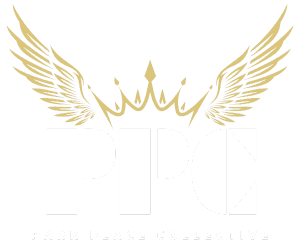In today’s digital age, businesses have a plethora of tools at their disposal to reach potential customers. One of the most powerful and effective methods is paid advertising. While organic strategies like SEO and content marketing are crucial for long-term growth, paid advertising can deliver immediate results and help businesses scale rapidly.
Paid advertising is essential for several reasons. Firstly, it offers instant visibility. Unlike SEO, which can take months to show results, paid ads can put your business in front of thousands of potential customers almost immediately. This is particularly useful for new businesses looking to establish their presence quickly or for existing businesses launching new products or services.
Secondly, paid advertising is highly targeted. Platforms like Google Ads and Facebook Ads allow you to specify exactly who sees your ads based on demographics, interests, behaviors, and even past interactions with your website. This level of precision ensures that your marketing budget is spent reaching the people most likely to convert into customers.
Finally, paid advertising provides measurable results. Unlike traditional advertising methods where it’s hard to track the return on investment (ROI), digital ads come with robust analytics. You can track impressions, clicks, conversions, and more, allowing you to see exactly how your campaigns are performing and make data-driven decisions to optimize your strategy.
While there are many types of paid advertising like Pay-Per-Click, Display, Social Media, Native ads, Retargeting, and Geofencing, let’s focus on the benefits and drawbacks of these.
Benefits of Paid Advertising
1. Increased Reach and Visibility
Paid advertising allows you to reach a larger audience than organic methods alone.
2. Immediate Results
Unlike organic strategies, which can take time to build momentum, paid advertising delivers immediate results. This is particularly beneficial for time-sensitive campaigns or when launching new products.
3. Enhanced Targeting Capabilities
Paid advertising platforms offer advanced targeting options that allow you to narrow down your audience based on various factors. This precision ensures that your ads are seen by people who are more likely to convert.
4. Measurable ROI
One of the biggest advantages of paid advertising is the ability to measure and analyze your results. With detailed analytics, you can track the performance of your campaigns and make data-driven decisions to optimize your strategy and maximize ROI. This helps you allocate your budget more effectively and achieve better results.
5. Brand Awareness and Recognition
Consistent exposure through paid advertising helps build brand awareness and recognition. When potential customers see your ads regularly, they are more likely to remember your brand and consider it when making purchasing decisions.
Drawbacks of Paid Advertising
1. High Costs
While paid advertising can deliver quick results, it can also be expensive, especially in competitive industries. Costs can quickly add up, and without careful budget management, you might find yourself spending more than you can afford. Small businesses or those with limited marketing budgets need to be particularly mindful of their spending.
2. Ad Fatigue
Over time, your target audience might become tired of seeing your ads, leading to decreased engagement and effectiveness. This phenomenon, known as ad fatigue, can result in lower click-through rates and higher costs per conversion. It’s important to regularly update your ad creatives and strategies to keep your audience engaged.
3. Short-Term Focus
While paid advertising is excellent for generating immediate results, it doesn’t necessarily contribute to long-term growth. Relying solely on paid ads can create a short-term focus, neglecting the benefits of building a strong organic presence that can provide sustained traffic and leads over time.
How to Get Started with Paid Advertising
1. Define Your Goals
Before launching a paid advertising campaign, it’s crucial to define your goals. Are you looking to drive traffic to your website, generate leads, increase sales, or build brand awareness? Clear goals will help you determine the best platforms and strategies to use.
2. Choose the Right Platforms
Select the advertising platforms that align with your goals and target audience. For example, if you’re targeting professionals, LinkedIn Ads may be more effective than Facebook Ads. If you’re looking to capture search intent, Google Ads is a great choice.
3. Create Compelling Ads
Your ads should be visually appealing and have a clear, compelling message. Use high-quality images or videos, write persuasive copy, and include a strong call-to-action (CTA) to encourage users to take the desired action.
4. Set a Budget
Determine how much you’re willing to spend on your campaigns. Most platforms allow you to set daily or lifetime budgets, ensuring you don’t overspend. Start with a modest budget and adjust based on the performance of your ads.
5. Monitor and Optimize
Once your campaigns are live, continuously monitor their performance using the analytics tools provided by the platforms. Analyze key metrics such as impressions, clicks, conversions, and cost-per-click (CPC). Use this data to optimize your ads, targeting, and budget allocation for better results.
Paid advertising is a powerful tool that can significantly enhance your marketing efforts. By offering immediate visibility, advanced targeting, and measurable results, it helps businesses reach their target audience more effectively and achieve their goals faster. By combining paid advertising with organic strategies and continuously optimizing your campaigns, you can maximize your ROI and drive sustainable growth for your business. Interested in experimenting with different platforms and strategies? Book a call today to discover what works best for your business.

